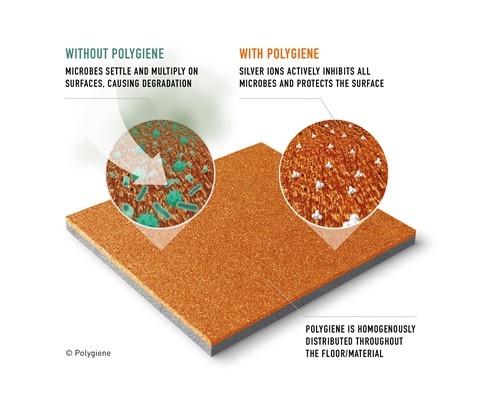Technical FAQ's
- General
-
What is an epoxy polymer resin?
Polymers are a class of materials that includes epoxy plastics. Two materials are used in their production: an epoxy resin base component and a variety of amines as a hardener component. The hardener and base component also contain a variety of additives, including fillers, reactive thinners, pigments, and other additives. These additives change the epoxy plastic to fit the specific purpose. A transverse structure known as epoxy plastic is created when the base and hardener are combined chemically.
-
What colours are available?
Every range of epoxy, MMA, and polyurethane products is offered in a number of standard colors. We advise using industry standard colors, ideally from the AS2700 range, to safeguard that the same color will always be available. In the event that the color you prefer is not offered as standard, we can make custom colors. Although they may cost more than standard colors, non-standard and specially blended colors can give your building a distinctive floor or help enhance your brands identity.
-
Are your products expensive?
In terms of cost, the majority of our flooring systems are comparable to timber flooring, tiling, and other floor finishes. To fully comprehend the financial impact, every flooring material should have a lifecycle costing conducted. Cheaper alternatives do exist, but at what cost to the overall project, its finish and performance?
- Does your product meet green building requirements and are they environmentally friendly?
-
How do I use multiple colours for aesthetics for safety?
A crucial tool for any designer is colour. Although grey is the most common colour we see specified for resin flooring projects, coloured options can be strategically employed to support EHS and improve site safety. Within a single site, segmenting zones, establishing walkways or safe spaces and even drawing attention to dangerous areas can all be accomplished by using contrasting colours. Don't be afraid to explore the rainbow!
-
Is epoxy resin good for flooring?
For the majority of settings, epoxy resin flooring solutions are an ideal option. An anime hardener, fillers, pigments, and other additives are mixed with an epoxy resin base component to create a stable and adaptable flooring solution. Keep in mind that epoxy resins are rigid by nature, making them unsuitable for situations where a substrate might be exposed to extreme heat or temperature fluctuations.
- Technical
-
What level of slip resistance do your flooring systems provide?
One of the key features of Flowcrete’s flooring systems is their flexibility. Slip resistant profiles can be tailored to your individual need and the application area. Our products are able to deliver slip resistance ratings as required by the relevant local AS 4586 – 2013 and SA HB 198:2014 slip resistant ratings of P0 – P5 (previously R-Rating).
To discuss your slip resistance requirements with a Flowcrete expert, please contact [email protected].
-
What is antimicrobial flooring?
Flooring that helps to inhibit the growth of bacteria, mould and mildew and can destroy a percentage of microbes landing on the surface of the floor. Antimicrobial additives are homogenously mixed within polyurethane resin in order to pro-actively assist with microbiological contamination strategies.
-
Do any of your flooring systems provide antibacterial or antimicrobial properties?
Our Flowfresh range of polyurethane flooring systems feature the Polygiene® silver-ion based antimicrobial additive which provides resistance to both bacterium and other microbes such as mould and mildew.
-
How does Polygiene® work within polyurethane flooring systems?
Polygiene® can be found throughout our Flowfresh flooring systems, deep within the resin matrix. It is present at the surface when installed and as the system wears over time it reveals more of the additive which does not degenerate with time.
The Polygiene® is ingested by the bacteria and therefore disrupts the internal DNA of the gram-positive and gram-negative bacteria, destroying the cell wall.
As the bacteria decays it releases the Polygiene® back to the surface, which in turn works in conjunction to that which is already there at the surface.

- Application
-
What surface is suitable for the application of resin?
Resin based floor coatings can be installed on a wide range of substrates and surface materials, including concrete and cementitious surfaces, with careful preparation, application can also be effective on various types of tile and pre-existing resinous material.
-
Who installs the flooring materials?
Our flooring systems should be installed by Flowcrete Australia’s recommended independent contractors.
This provides a high level of quality and ensures selection of a preferred functional and aesthetic solution can be made with complete confidence.
-
Where are your flooring contractors and applicators?
Flowcrete Australia has established relationships with a network of independent flooring contractors and applicators that are able to service clients flooring requirements across Oceania, including Australia, New Zealand, Papua New Guinea and the Pacific Islands.
To find out more information on Flowcrete Australia recommended independent contractors in your local area, please contact [email protected]
-
What preparation does your company require in advance of applying the resin?
Surface preparation should be conducted by the independent flooring contractor prior to the application of a Flowcrete flooring system.
As we offer a variety of resin flooring systems, the preparation requirements may differ, and this can be identified during the flooring specification process.
-
Does the floor need a primer?
High-build coatings are self-priming, but the substrate may vary in porosity, so two coats are recommended to achieve a consistent appearance.
Self-levellers will bond effectively on their own, but a primer is still essential to seal the substrate. Otherwise air in the substrate may rise through the self-leveller and cause air bubbles.
A screed or mortar topping will need a primer to ensure a good bond with the substrate, the exception being some water-based polyurethane screeds, which can be applied to cementitious substrates (concrete or screed) without a primer.
-
How To Install a Flowcrete Protective Resin Car Park Coating
-
How To Install a Flowcrete Flowcoat Terrosso Decorative Flake Resin Flooring System
-
How to Apply Flowcrete UV Resistant Roll Coat
-
How to Apply Epoxy Resin Roll Coat
-
How to Install Rapid Curing Resin Flooring
-
How to Install Flowcrete Rapid Resin Terrazzo
Have Another Question?
Got a question that we haven't covered? No worries - simply fill in the quick form below, and a member of our expert team will get right back to you with an answer!

